
Gryfino is a town in Pomerania, northwestern Poland, with 21,393 inhabitants (2017). It is also the capital of Gryfino County in West Pomeranian Voivodeship.
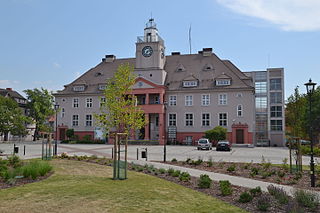
Kędzierzyn-Koźle is a city in southern Poland, the administrative center of Kędzierzyn-Koźle County. With 58,899 inhabitants as of 2021, it is the second most-populous city in the Opole Voivodeship.
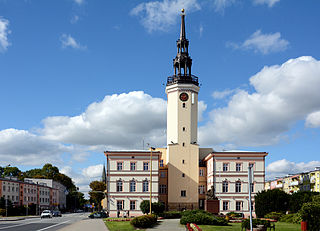
Strzelce Opolskie is a town in southern Poland with 17,900 inhabitants (2019), situated in the Opole Voivodeship. It is the capital of Strzelce County.
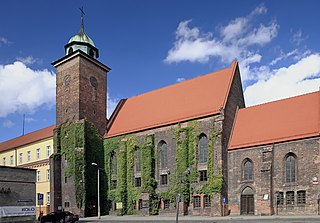
Racibórz is a city in Silesian Voivodeship in southern Poland. It is the administrative seat of Racibórz County.
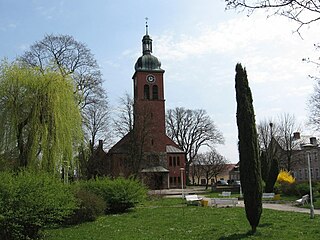
Zakrzewo is a village in Złotów County, Greater Poland Voivodeship, in north-central Poland. It is the seat of the gmina called Gmina Zakrzewo. It lies approximately 10 kilometres (6 mi) north-east of Złotów and 114 km (71 mi) north of the regional capital Poznań.
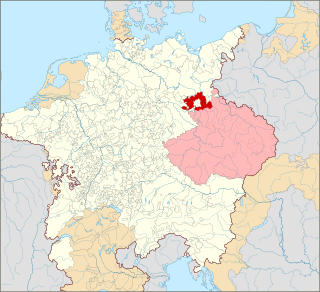
Lower Lusatia is a historical region in Central Europe, stretching from the southeast of the German state of Brandenburg to the southwest of Lubusz Voivodeship in Poland. Like adjacent Upper Lusatia in the south, Lower Lusatia is a settlement area of the West Slavic Sorbs whose endangered Lower Sorbian language is related to Upper Sorbian and Polish.

Biała, informally Biała Prudnicka, is a small town in southern Poland, located in the southern part of Opole Voivodeship in Prudnik County near the border with the Czech Republic. It is the administrative seat of Gmina Biała. As of December 2021, it has a population of 2,336.
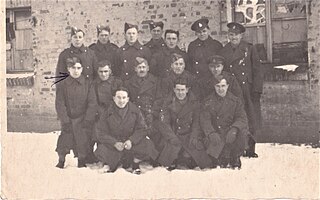
Stalag VIII-B was a German Army prisoner-of-war camp during World War II, later renumbered Stalag-344, located near the village of Lamsdorf in Silesia. The camp initially occupied barracks built to house British and French prisoners in World War I. At this same location there had been a prisoner camp during the Franco-Prussian War of 1870-71.

Pierzchowice is a village in the administrative district of Gmina Mikołajki Pomorskie, within Sztum County, Pomeranian Voivodeship, in northern Poland. It lies approximately 5 kilometres (3 mi) south-west of Mikołajki Pomorskie, 11 km (7 mi) south-east of Sztum, and 67 km (42 mi) south-east of the regional capital Gdańsk.
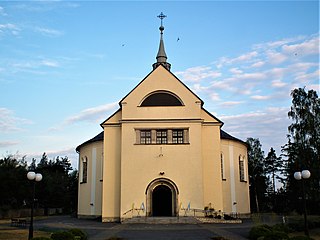
Kolonowskie is a town in Strzelce County, Opole Voivodeship, Poland, with 3,309 inhabitants (2019). It is the seat of Gmina Kolonowskie which has been officially bilingual in Polish and German since 2006.

Przemków is a town in Polkowice County, Lower Silesian Voivodeship, in western Poland. It is the seat of the administrative district called Gmina Przemków. The town lies approximately 19 kilometres (12 mi) west of Polkowice, and 97 kilometres (60 mi) northwest of regional capital Wrocław.

Nowe Kramsko is a village in the administrative district of Gmina Babimost, within Zielona Góra County, Lubusz Voivodeship, in western Poland. It lies approximately 4 kilometres (2 mi) south-west of Babimost and 28 km (17 mi) north-east of Zielona Góra. It is situated on the northern shore of Lake Wojnowskie.

Bierawa is a village in Kędzierzyn-Koźle County, Opole Voivodeship, in south-western Poland. It is the seat of the gmina called Gmina Bierawa. It lies approximately 8 kilometres (5 mi) south-east of Kędzierzyn-Koźle and 48 km (30 mi) south-east of the regional capital Opole.

Kotlarnia is a village in the administrative district of Gmina Bierawa, within Kędzierzyn-Koźle County, Opole Voivodeship, in southern Poland. It lies approximately 10 kilometres (6 mi) east of Bierawa, 16 km (10 mi) south-east of Kędzierzyn-Koźle, and 54 km (34 mi) south-east of the regional capital Opole.
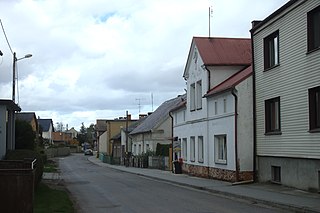
Zakrzów is a village in the administrative district of Gmina Polska Cerekiew, within Kędzierzyn-Koźle County, Opole Voivodeship, in south-western Poland. It lies approximately 4 kilometres (2 mi) north-east of Polska Cerekiew, 12 km (7 mi) south of Kędzierzyn-Koźle, and 49 km (30 mi) south of the regional capital Opole.
Cygusy is a village in the administrative district of Gmina Sztum, within Sztum County, Pomeranian Voivodeship, in northern Poland. It lies approximately 7 kilometres (4 mi) south-east of Sztum and 62 km (39 mi) south-east of the regional capital Gdańsk.

Dywity is a village in Olsztyn County, Warmian-Masurian Voivodeship, in northern Poland. It is the seat of the gmina called Gmina Dywity. It lies approximately 8 km (5 mi) north of the regional capital Olsztyn. It is located on the Dywickie Lake in Warmia.

Klettwitz is a village in the municipality of Schipkau, in Brandenburg, in eastern Germany, situated in the historical region of Lower Lusatia.

The Neustadt O.S. district was a Prussian district in Upper Silesia from 1743 to 1945. Its capital was the city of Neustadt (Prudnik). Its territory corresponded roughly to the present-day Prudnik County in the Opole Voivodeship in Poland.

Sławięcice is a district of Kędzierzyn-Koźle, Opole Voivodeship, Poland, located in the eastern part of the city.























